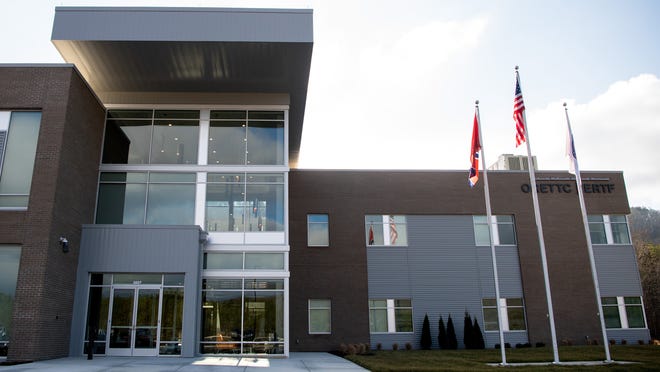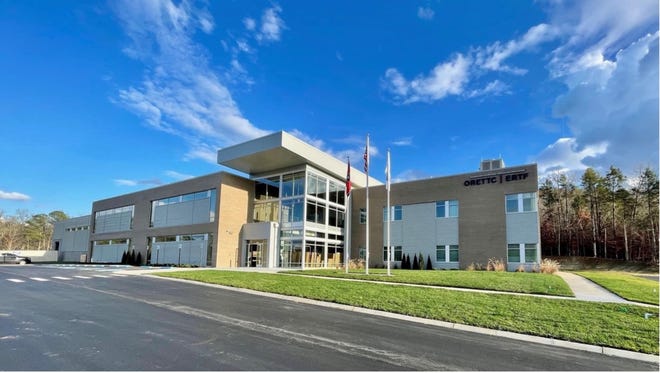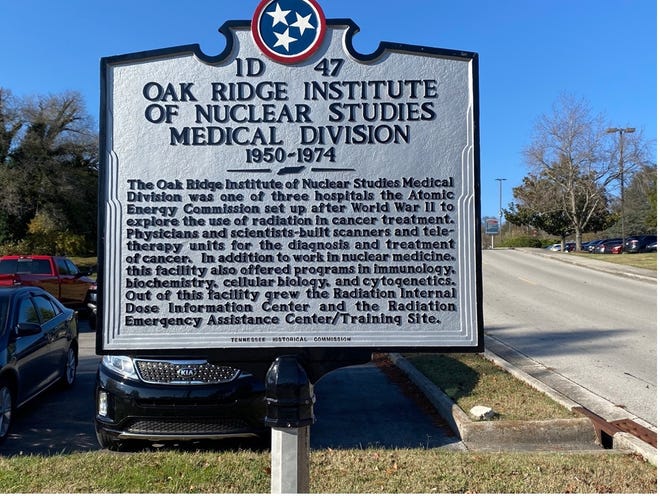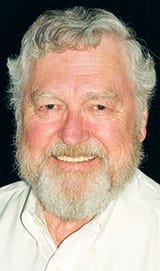Oak Ridge Enhanced Technology & Training Center; TAT School, more
D Ray Smith
This two-part “Historically Speaking” series introduces the latest enhanced training facility in Oak Ridge and explores the history of such training in the city since right after the Manhattan Project until today and takes a brief look at what the future might hold for Oak Ridge .
It was prepared with the help of the Y-12 National Security Complex staff and includes photos from their archives.
Another important milestone was reached on Jan. 9, with the official opening of the Y-12 National Security Complex’s new Oak Ridge Enhanced Technology & Training Center (ORETTC). For nearly 80 years, Oak Ridge has been the home to a remarkable number of training programs and facilities that impacted the course of world history – the birth of the US Nuclear Navy, treatments for cancer, and creating NNSA’s National Prototype Center.
The first building on the ORETTC campus, located on Oak Ridge Turnpike in west Oak Ridge, is the Emergency Response Training Facility (ERTF), a $15 million, 40,000 square-foot facility, funded by the state of Tennessee through the efforts of Gov . Bill Lee, Lt. gov. Randy McNally, and Sen. Ken Yager. It will provide a unique opportunity to train first responders and others in dealing with radioactive events using mixed-reality technologies creating training environments in which participants are placed in unlimited scenarios replicating what they will experience in the field.
“By the use of this technology, we will train current and future generations of first responders to a level of competence never achieved before,” said ORETTC Director Ashley Stowe. “Y-12 has long provided the expertise, talent, and people to provide this type of training, but the availability of the ORETTC allows us to take it to a higher level of hands-on, real-world experiences.”
“The Oak Ridge Enhanced Technology & Training Center creates yet another opportunity for Tennessee to be a global leader in nuclear energy,” said Gov. Lee at the center’s groundbreaking. “We look forward to welcoming first responders and experts to this new space and pioneering best practices for nuclear safety.”
A second $20 million, 35,000 square foot, NNSA-funded building, the Simulated Nuclear & Radiation Activities Facility (SNRAF) will soon begin construction adjacent to ERTF to allow practical application of the training received at the training center.
This new advanced training facility has state-of-the-art technologies, equipment, classrooms, and multiple use spaces, which will make it the premier facility in the nation to train those responsible for safeguarding nuclear and radioactive material with the latest nuclear security, detection, and non-proliferation technologies. That same facility will also train first responders and other experts in nuclear operations, safeguards, cyber, and emergency response.
More training facilities
While this training facility is the newest one, Oak Ridge has a history of exemplary training initiatives. The first one was the Clinton Training School started by Eugene Wigner and operated from 1946 to 1947. Then Capt. Hyman Rickover attended and realized by using enriched uranium a nuclear reactor could be small enough to go inside a submarine – thus began the US Nuclear Navy!
Then beginning in 1950, Rickover and Alvin Weinberg began a collaboration to reestablish the school as the Oak Ridge School of Reactor Technology. The school was the only one in the world where comprehensive training in nuclear reactors could be obtained.
The Oak Ridge School of Reactor Technology was the first to provide students with hands-on experience to a variety of nuclear reactor designs, including the legendary first graphite reactor, pool reactor, high temperature gas reactor, molten salt reactor, fast reactor, and high flux reactor. Eventually, it enrolled 100 students per year and included international students, as well as students from across the nation.
Many of the graduates became leaders in the nuclear industry. It was closed in 1965 after universities began to develop their own nuclear engineering programs.
Another early effort that included training which was developed in Oak Ridge is now known as Oak Ridge Institute for Science and Education. It was originally conceived by University of Tennessee physics professor William G. Pollard as a peacetime purpose for the nuclear science developed through the Manhattan Project.
On Oct. 17, 1946, the Oak Ridge Institute of Nuclear Studies was formed. The name was later changed to Oak Ridge Associate Universities (ORAU). In 1992, the Department of Energy formed Oak Ridge Institute for Science and Education (ORISE) by consolidating several legacy programs and selected ORAU to manage the newly formed ORISE.
An ORISE program, Radiation Emergency Assistance Center/Training Site, is a world-renowned leader in emergency medical response to radiological/nuclear incidents with training courses that annually reach thousands of healthcare professionals, emergency responders and health physicians worldwide.
Most unusual: TAT School
One of the most unusual training programs ever developed at Oak Ridge was the Training and Technology program located at Y-12. In 1966, Y-12’s contractor, Union Carbide Corp.’s Nuclear Division, began participating in a demonstration industrial training program in cooperation with the Department of Labor, the Atomic Energy Commission, and Oak Ridge Associated Universities. This experiment in learning came about because “… millions of Southerners are unable to make reasonable use of their potential for work mainly because of inadequate education and training.” The dedicated and continuing effort to train unemployed and underemployed persons was a forerunner of other similar programs across the nation in later years. It was best known just as “TAT” or the “TAT School” and was officially named Training and Technology. The TAT School lasted until 1984.
TAT graduated well over 6,000 trainees with a job placement rate exceeding 90% and an average salary that far exceeded other such efforts to provide jobs to the unemployed. Within three years, the money invested by the government in the training program for each student was returned by providing skilled jobs that resulted in increased income tax payments. Other aspects of the unusual and ground breaking TAT program was that by 1976 the percentage of female trainees had risen to 13%. The percentage of minorities of all types had also increased substantially.
In 1972 and again in 1975 a work release program was established with local prisons that enabled model prisoners to attend TAT. The story is told of one instructor who went by the local jail each morning and picked up a trainee and then returned him to jail in the evenings. Yet another example of the relationships built between instructors and trainees involved in a program that was created whereby local high school seniors could participate in the training as well. TAT’s success is a great story and may well be one that just because of its success was able to help change the way training was done across the nation and thus put itself out of business.
Others became able to do the training because of the model training program developed right here in East Tennessee by ORAU and Union Carbide Nuclear Division with the support of the DOE. Such prototype work was common to Y-12 even then. Today, Y-12 is recognized as a highly successful National Prototype Center.
Much like the Training and Technology program of the 1960s through the early 1980s, the Oak Ridge Centers for Manufacturing Technology (ORCMT) in the 1990s was also a unique and unusual effort. It was a pioneering approach to solving tough manufacturing problems.
The ORCMT was another of the historic initiatives to come from Oak Ridge that had widespread implications for industry, literally nationwide. The innovative approach to addressing difficult problems in companies was a joint effort between the Oak Ridge National Laboratory and Y-12, along with several other intermediary partners.
Those intermediary partners were the Center for Industrial Services at the University of Tennessee; National Technology Transfer Center housed at Jesuit College in Wheeling, West Virginia; Tennessee Department of Economic and Community Development, Tennessee Department of Education; the Tennessee Valley Authority’s Office of Planning & Development Services; and the National Institute of Standards and Technology Manufacturing Extension Partnership. ORCMT was engaged in a widespread initiative to assist the many small businesses across the nation.
Next, we will continue our look at the history of training in Oak Ridge and look at what the future may hold as technology continues to advance.







Comments are closed.